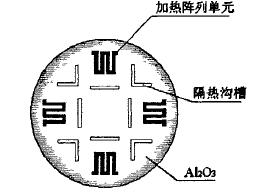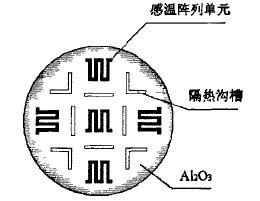Wind field measurements generally include two vectors: wind speed and direction. Although the true ideal wind field measurement includes a three-dimensional vector, it is very difficult to determine the three-dimensional vector. Therefore, we usually encounter two measurements—wind speed and direction. Wind speed and direction sensors are commonly used in meteorological measurements. Currently, the well-known foreign manufacturers include Denmark's Dantec Corporation and American TSI Corporation. The wind speed measurement range is approximately 1-60m/s with an error of ±0.5m/s; the wind direction measurement is 0-360° with an error of ±3°.
The early application of wind speed and wind direction sensors was based on LDV and HWA. These two technologies complement each other and have their own characteristics. Nowadays, there are still quite a lot of applications. After entering the 1980s, the silicon-based micromachining technology has gradually matured and gained everyone's attention. By the end of the eighties, sensors that have successfully measured wind speed and direction have been developed.
The working principle of the silicon flow wind speed and wind direction sensor is as follows: Four temperature sensitive resistors are arranged on four sides of a square diaphragm, and a heating resistor is placed in the middle of the diaphragm. When the wind blows to the chip in a certain direction, the wind speed will be decomposed into two components Vx, Vy, and then these two components are felt by the four resistors on the chip, causing the output of the bridge to change. Then go through a certain amplification circuit processing to get the ratio of Vx, Vy, the corresponding wind direction can be judged. Please see the specific wind speed sensor layout below.

Figure 1 Wind speed sensor heating surface

Figure 2 Wind speed sensor
Figure 1 shows the heating surface of the wind speed and direction sensor. The four symmetrically distributed heating array units are heater chips, typically platinum film thermistors, which are used to symmetrically heat the chip above its ambient temperature. FIG. 2 is an array chip of a temperature-sensing array unit. Four edges are symmetrically distributed, and a middle chip is used to measure the temperature of the chip.
The sensitivity of wind speed and direction sensors almost determines the performance of the entire instrument. Today, many technologies are used to increase the sensitivity of sensors. One of them is the anti-corrosion technology. It separates the heating resistors from the edges, which greatly increases the heating efficiency, and at the same time makes the convection speed more sensitive and the corresponding speed increases.

Heavy Hex Nuts, Heavy Hexagonal Nuts, Hexagon Heavy Nuts
Ningbo Brightfast Machinery Industry Trade Co.,Ltd , https://www.brightfastener.com